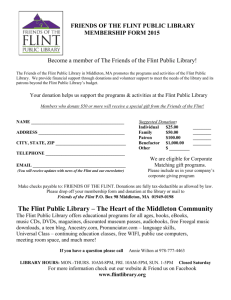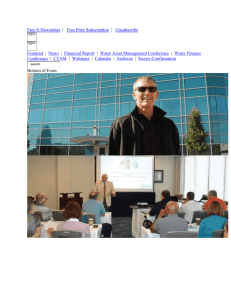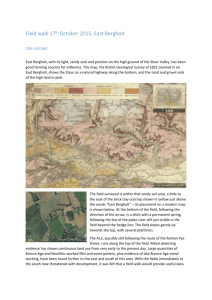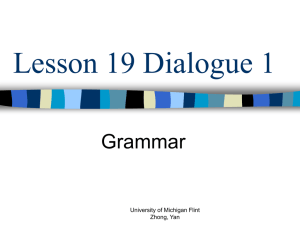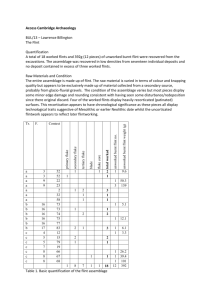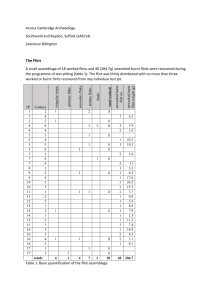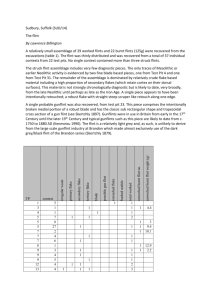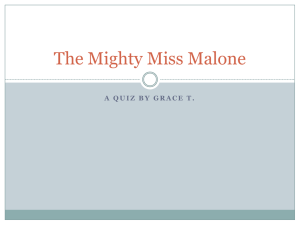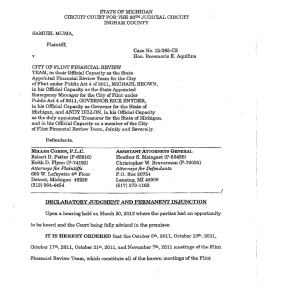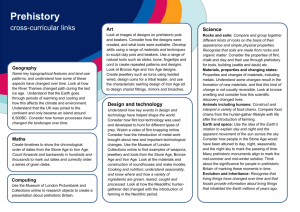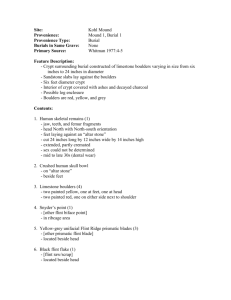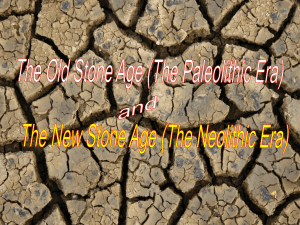Click here - Classroom Law Project
advertisement
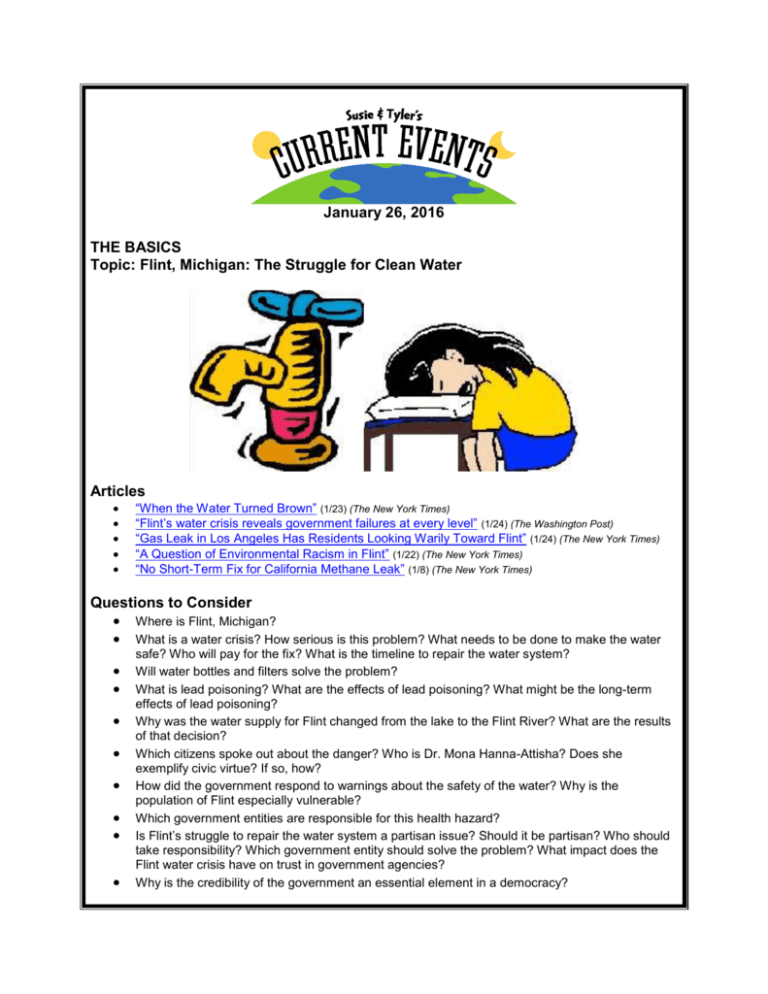
January 26, 2016 THE BASICS Topic: Flint, Michigan: The Struggle for Clean Water Articles “When the Water Turned Brown” (1/23) (The New York Times) “Flint’s water crisis reveals government failures at every level” (1/24) (The Washington Post) “Gas Leak in Los Angeles Has Residents Looking Warily Toward Flint” (1/24) (The New York Times) “A Question of Environmental Racism in Flint” (1/22) (The New York Times) “No Short-Term Fix for California Methane Leak” (1/8) (The New York Times) Questions to Consider Where is Flint, Michigan? What is a water crisis? How serious is this problem? What needs to be done to make the water safe? Who will pay for the fix? What is the timeline to repair the water system? Will water bottles and filters solve the problem? What is lead poisoning? What are the effects of lead poisoning? What might be the long-term effects of lead poisoning? Why was the water supply for Flint changed from the lake to the Flint River? What are the results of that decision? Which citizens spoke out about the danger? Who is Dr. Mona Hanna-Attisha? Does she exemplify civic virtue? If so, how? How did the government respond to warnings about the safety of the water? Why is the population of Flint especially vulnerable? Which government entities are responsible for this health hazard? Is Flint’s struggle to repair the water system a partisan issue? Should it be partisan? Who should take responsibility? Which government entity should solve the problem? What impact does the Flint water crisis have on trust in government agencies? Why is the credibility of the government an essential element in a democracy? Where is Porter Ranch, California? What is a methane leak? What are the similarities and differences with the Flint safe-water failure? Why is evacuation an answer for Porter Ranch residents but not for Flint residents? Which agency is responsible for solving the gas leakage problem? Is there a right to clean water? Should there be a formal acknowledgement of that right? How widespread is lead poisoning? What actions might citizens take to improve water quality? To hold government officials responsible for their actions or lack of action in protecting the public? PBS Newshour Questions THE EXTRAS Pre-teaching, Extensions & Further Reading “Lead Poisoning” (National Institute of Environmental Health Sciences) “Who Poisoned Flint, Michigan?” (1/22) (Rolling Stone) “5 things to know about Flint’s water crisis” (1/21) (CNN) “Flint doctor heads effort to mitigate kids’ lead exposure” (1/23) (Modern Healthcare) Lesson Plans “Poison water in Flint affects everyone’s health – especially kids” (PBS Newshour) “Science Ambassador Lesson Plans: Middle and High School” (CDC) “Should a clean and healthy environment be a constitutional right?” (National Constitution Center) What’s the Connection? Constitutional “The Constitutional Right to a Healthy Environment” (Environment Magazine) “The human right to water and sanitation” (United Nations) Oregon “America’s lead poisoning problem isn’t just in Flint. It’s everywhere.” (Vox) “2015 Drinking Water Quality Report” (Portland Water Bureau) Students “Protesters demand resignation of Gov. Snyder for Flint water crisis” (Central Michigan Life) Oregon State Social Science Standards 8.14. Explain rights and responsibilities of citizens. 8.21. Analyze important political and ethical values such as freedom, democracy, equality, and justice embodied in documents such as the Declaration of Independence, the United States Constitution, and the Bill of Rights. 8.26. Examine a controversial event, issue, or problem from more than one perspective. HS.33. Explain the role of government in various current events. HS.35. Examine the pluralistic realities of society (e.g., race, poverty, gender, and age), recognizing issues of equity, and evaluating need for change. HS.59. Demonstrate the skills and dispositions needed to be a critical consumer of information. HS.60. Analyze an event, issue, problem, or phenomenon form varied or opposing perspectives or points of view. CCSS Anchor Standards 2. Determine central ideas or themes of a text and analyze their development; summarize the key supporting details and ideas. 4. Interpret words and phrases as they are used in a text, including determining technical, connotative, and figurative meanings, and analyze how specific word choices shape meaning or tone. 6. Assess how point of view or purpose shapes the content and style of a text. 7. Integrate and evaluate content presented in diverse media and formats, including visually and quantitatively, as well as in words. 8. Delineate and evaluate the argument and specific claims in a text, including the validity of the reasoning as well as the relevance and sufficiency of the evidence. We the People Lesson Connections Middle School, Level 2 Unit 6, Lesson 29: What are the rights and responsibilities of citizenship? High School, Level 3 Unit 6, Lesson 34: What is the importance of civic engagement to American Constitutional Democracy?
